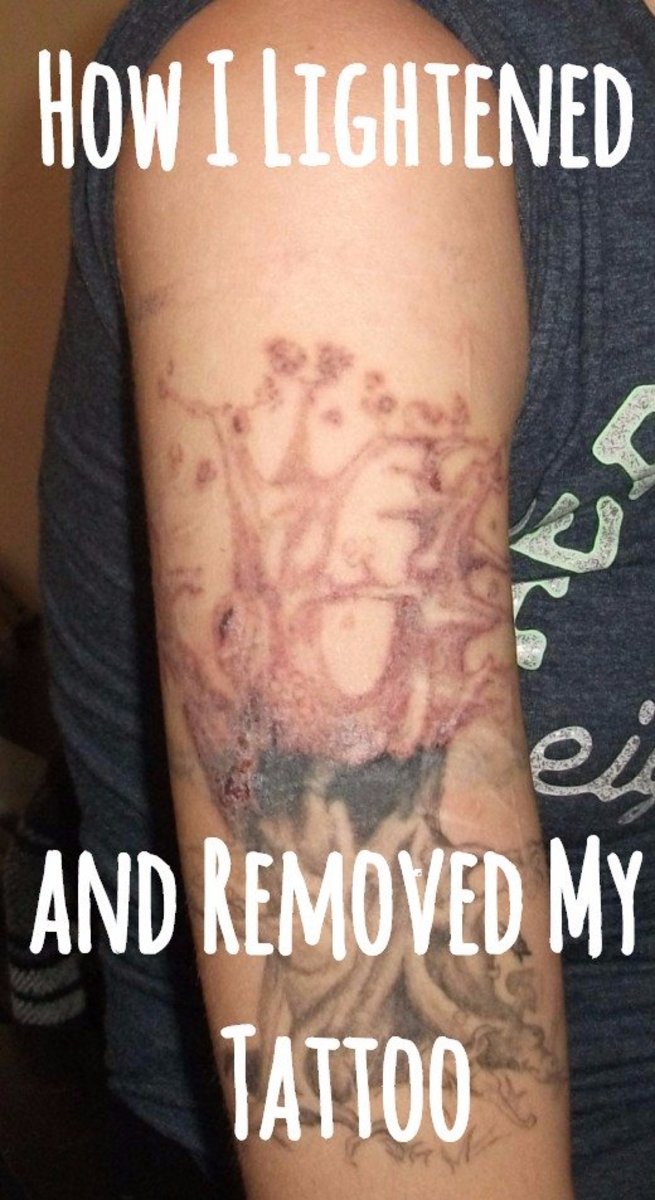4 Top Natural Methods How to Remove Tattoos at Home YouTube
The word tattoo, or tattow in the 18th century, is a loanword from the Samoan word tatau, meaning "to strike". The Oxford English Dictionary gives the etymology of tattoo as "In 18th c. tattaow, tattow. From Polynesian (Samoan, Tahitian, Tongan, and so on.) tatau. In Marquesan, tatu." Just before the importation of the Polynesian word, the practice of tattooing had been described in the West as painting, scarring or staining.The etymology of the body modification term is not to be confused with the origins of the word for the military drumbeat or efficiency — see military tattoo. In this case, the English word tattoo is derived from the Dutch word taptoe.The initial written reference to the word tattoo (or tatau) seems in the journal of Joseph Banks (24 February 1743 – 19 June 1820), the naturalist aboard explorer James Cook's ship HMS Endeavour: "I shall now mention the way they mark themselves indelibly, each of them is so marked by their humour or disposition".[5] The word tattoo was brought to Europe by Cook, when he returned in 1769 from his first voyage to Tahiti and New Zealand. In his narrative of the voyage, he refers to an operation named "tattaw".
Tattoo enthusiasts may refer to tattoos as "ink", "pieces", "skin art", "tattoo art", "tats" or "work"; to the creators as "tattoo artists", "tattooers" or "tattooists"; and to places where they work as "tattoo shops", "tattoo studios" or "tattoo parlors".Mainstream art galleries hold exhibitions of each traditional and custom tattoo styles, such as Beyond Skin, at the Museum of Croydon. Copyrighted tattoo styles that are mass-produced and sent to tattoo artists are identified as "flash", a notable instance of industrial design.[8] Flash sheets are prominently displayed in a lot of tattoo parlors for the goal of delivering both inspiration and ready-created tattoo photos to clients.
The Japanese word irezumi indicates "insertion of ink" and can mean tattoos using tebori, the standard Japanese hand strategy, a Western-style machine or any method of tattooing utilizing insertion of ink. The most widespread word utilised for traditional Japanese tattoo styles is horimono. Japanese might use the word tattoo to imply non-Japanese types of tattooing.




thank you for visiting this page about how to remove tattoos, i hope you enjoy it.

The word tattoo, or tattow in the 18th century, is a loanword from the Samoan word tatau, meaning "to strike". The Oxford English Dictionary gives the etymology of tattoo as "In 18th c. tattaow, tattow. From Polynesian (Samoan, Tahitian, Tongan, and so on.) tatau. In Marquesan, tatu." Just before the importation of the Polynesian word, the practice of tattooing had been described in the West as painting, scarring or staining.The etymology of the body modification term is not to be confused with the origins of the word for the military drumbeat or efficiency — see military tattoo. In this case, the English word tattoo is derived from the Dutch word taptoe.The initial written reference to the word tattoo (or tatau) seems in the journal of Joseph Banks (24 February 1743 – 19 June 1820), the naturalist aboard explorer James Cook's ship HMS Endeavour: "I shall now mention the way they mark themselves indelibly, each of them is so marked by their humour or disposition".[5] The word tattoo was brought to Europe by Cook, when he returned in 1769 from his first voyage to Tahiti and New Zealand. In his narrative of the voyage, he refers to an operation named "tattaw".
Tattoo enthusiasts may refer to tattoos as "ink", "pieces", "skin art", "tattoo art", "tats" or "work"; to the creators as "tattoo artists", "tattooers" or "tattooists"; and to places where they work as "tattoo shops", "tattoo studios" or "tattoo parlors".Mainstream art galleries hold exhibitions of each traditional and custom tattoo styles, such as Beyond Skin, at the Museum of Croydon. Copyrighted tattoo styles that are mass-produced and sent to tattoo artists are identified as "flash", a notable instance of industrial design.[8] Flash sheets are prominently displayed in a lot of tattoo parlors for the goal of delivering both inspiration and ready-created tattoo photos to clients.
The Japanese word irezumi indicates "insertion of ink" and can mean tattoos using tebori, the standard Japanese hand strategy, a Western-style machine or any method of tattooing utilizing insertion of ink. The most widespread word utilised for traditional Japanese tattoo styles is horimono. Japanese might use the word tattoo to imply non-Japanese types of tattooing.
Related Images with 4 Top Natural Methods How to Remove Tattoos at Home YouTube
Why Laser Tattoo Removal is the Preferred Treatment Option NY Metro Vein

Get Rid Tattoo Naturally Review How To Remove Tattoos Easily – hynguyenblog.com
How they remove your tattoo!
My Experience Lightening and Removing My Tattoo at Home TatRing

thank you for visiting this page about how to remove tattoos, i hope you enjoy it.
Comments
Post a Comment